We organize Specialty Eye Clinics for patients with certain ocular diseases.
- Retina
- Cornea
- Glaucoma
- Uveitis
- Oculoplastics
- Low Vision
- Pediatrics (eye issues in children)
- Strabismus
- Neuro-ophthalmology
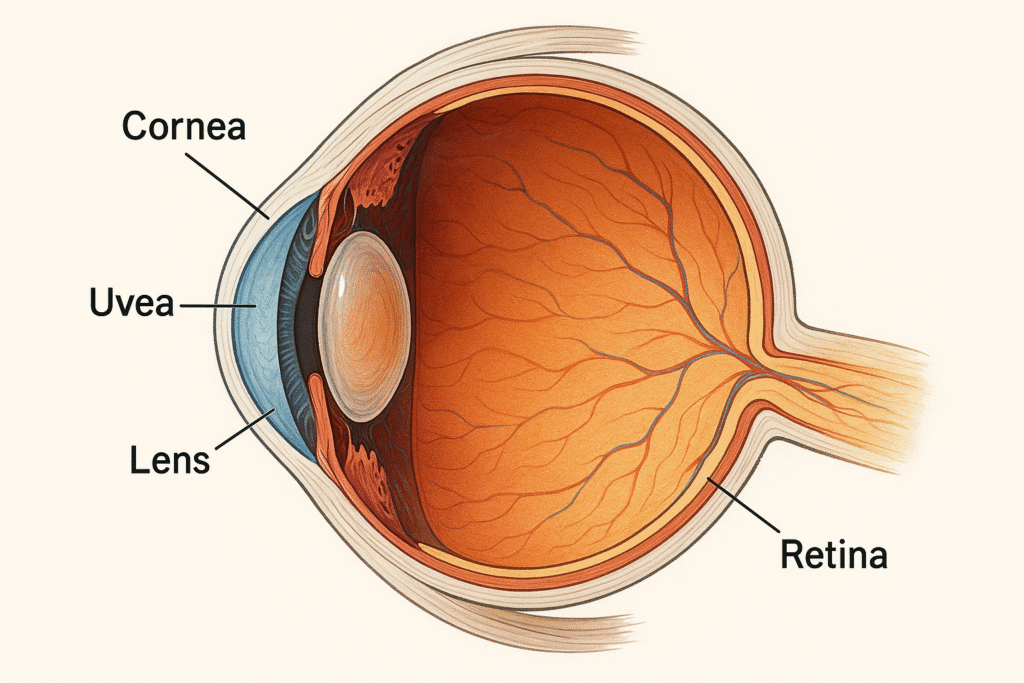
Retina:
With the increasing prevalence of retinal diseases such as diabetic retinopathy, diabetic macular edema, and macular degeneration (geographic atrophy), with commonly observed conditions such as retinal breaks and holes in the retina, as well as retinal degenerative diseases such as Retinitis Pigmentosa, Stargardt disease, Cone-Rod dystrophy, etc., we have been organizing a regularly scheduled retina clinic within the OCEP program since the start.
A significant number of retinal disease patients require injections such as Eylea, Lucentis, Vabysmo and Eylea-HD in the eye. With the help of patient assistance programs by Regeneron Pharmaceuticals and Genentech/Roche Pharmaceuticals, we have been providing injections to our patients in the clinic since the very beginning.
Cornea:
Routine corneal diseases encompass a range of conditions affecting the cornea, the transparent front part of the eye.
Common diseases include corneal infections (like keratitis), corneal dystrophies, and corneal ectasia (including keratoconus). Other conditions include traumatic or secondary eye conditions like corneal abrasions and Fuchs’ endothelial dystrophy.
Symptoms can include blurred or distorted vision, pain and discomfort, light sensitivity, redness and swelling, gritty or scratchy feeling in the eye, excessive tearing, glare and halos around lights, etc,
Glaucoma:
Glaucoma is generally caused by the eye pressure causing damage to the optic nerve, the nerve that connects the eye to the brain. In most cases, high eye (intraocular) pressure leads to the damage, which is usually slowly progressive and hence patients do not become aware of the damage until its too late.
Glaucoma may described as open angle, which is chronic and slowly progressive, and closed-angle, which may present as an emergency. When patients have narrow angles in the eye, it increases the chances of sudden increase in eye pressure, especially when the eyes are dilated. In case of a narrow angle, which we confirm with advanced technology such as Heidelberg Engineering’s Anterion OCT, we perform a laser procedure to avoid the likelihood of closed angle glaucoma.
Uveitis:
Uveitis is an inflammation of the uvea, the middle layer of the eye that includes the iris, ciliary body, and choroid.
Various types of uveitis include anterior uveitis (inflammation of the iris and ciliary body); intermediate uveitis (inflammation of the ciliary body and vitreous humor); posterior uveitis (inflammation of the choroid and retina) and panuveitis (Inflammation of all three layers of the uvea).
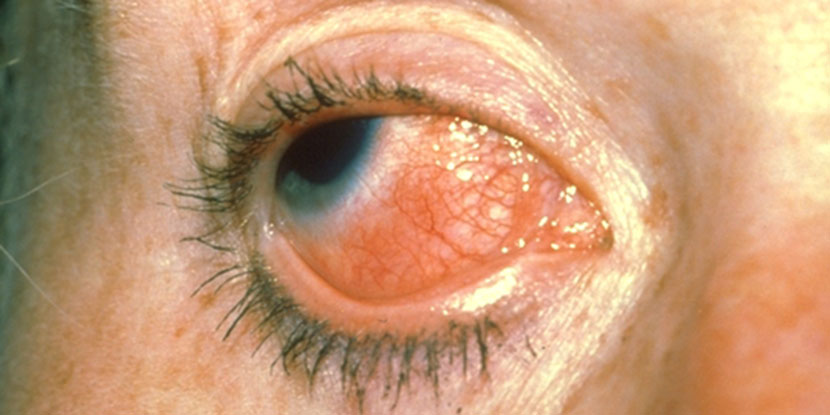
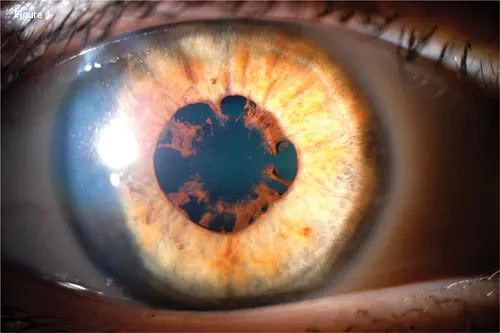
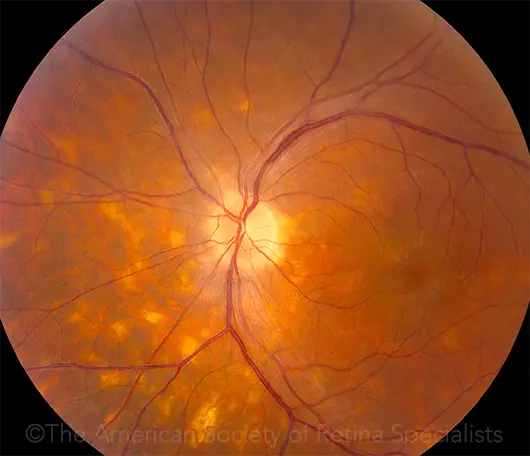
Uveitis can affect one or both eyes. It can be a chronic condition, with flare-ups and remissions. Hence it is important for the patient to be seen early to avoid developing a chronic condition. Also, a number of investigations may be required to identify the cause for the condition before treatment is initiated.
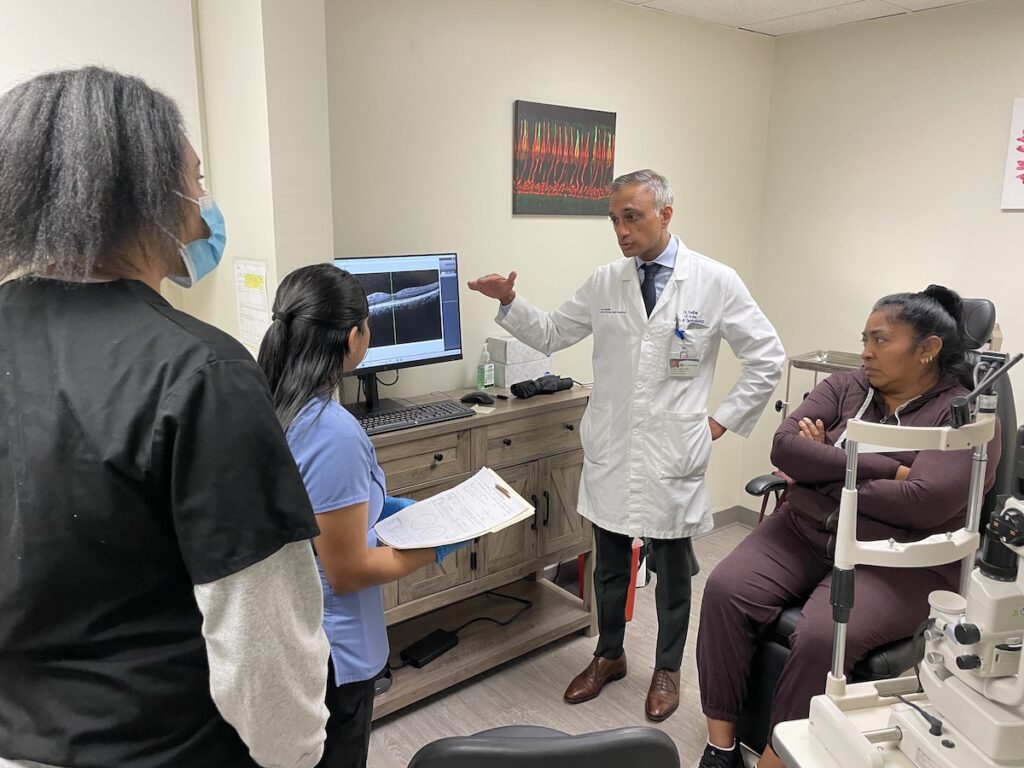
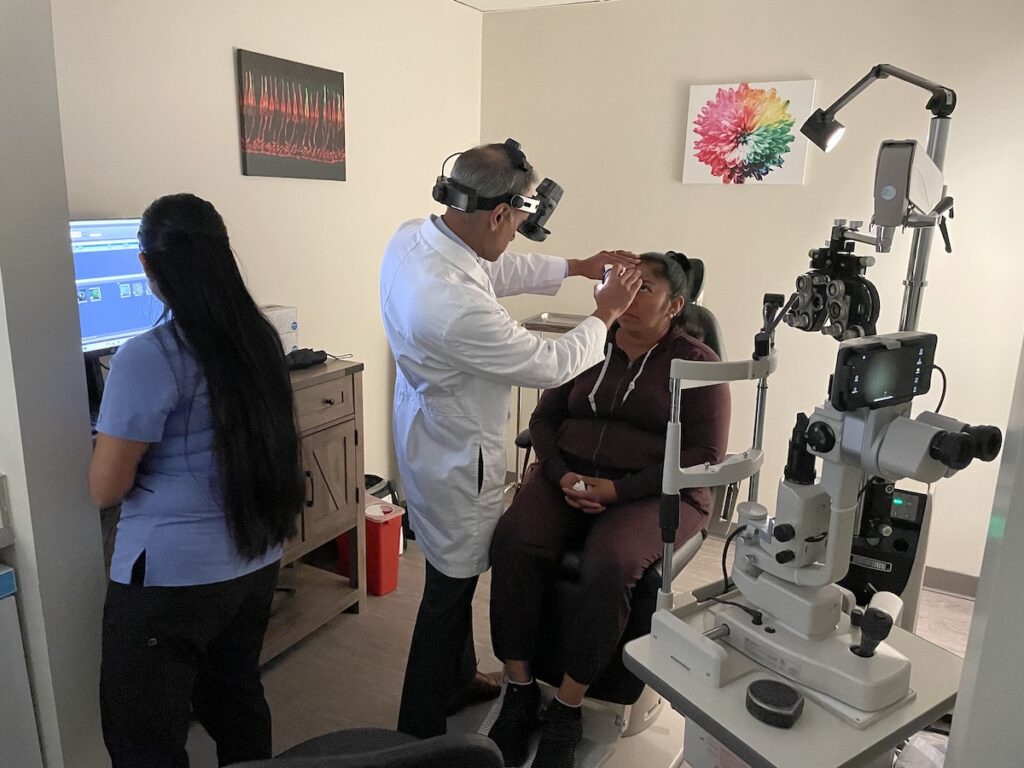
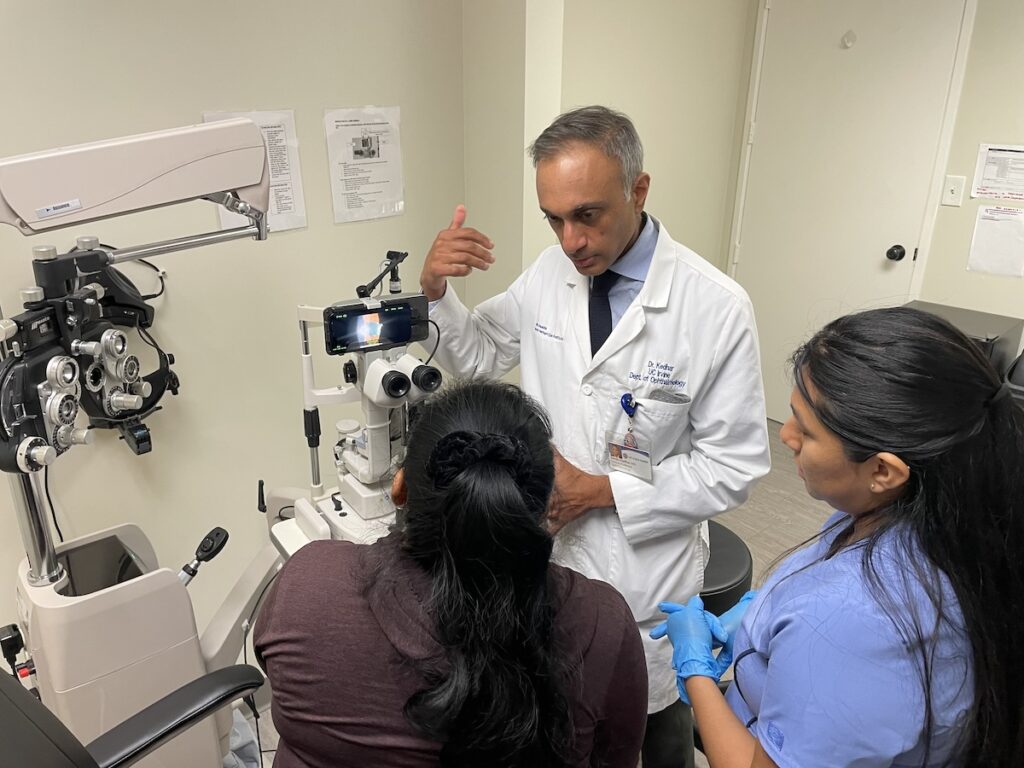
Oculoplastics:
Oculoplastics is a specialized area of ophthalmology that focuses on the plastic and reconstructive surgery of the structures surrounding the eye, including the eyelids, tear ducts, orbit (bone around the eye), and parts of the face.
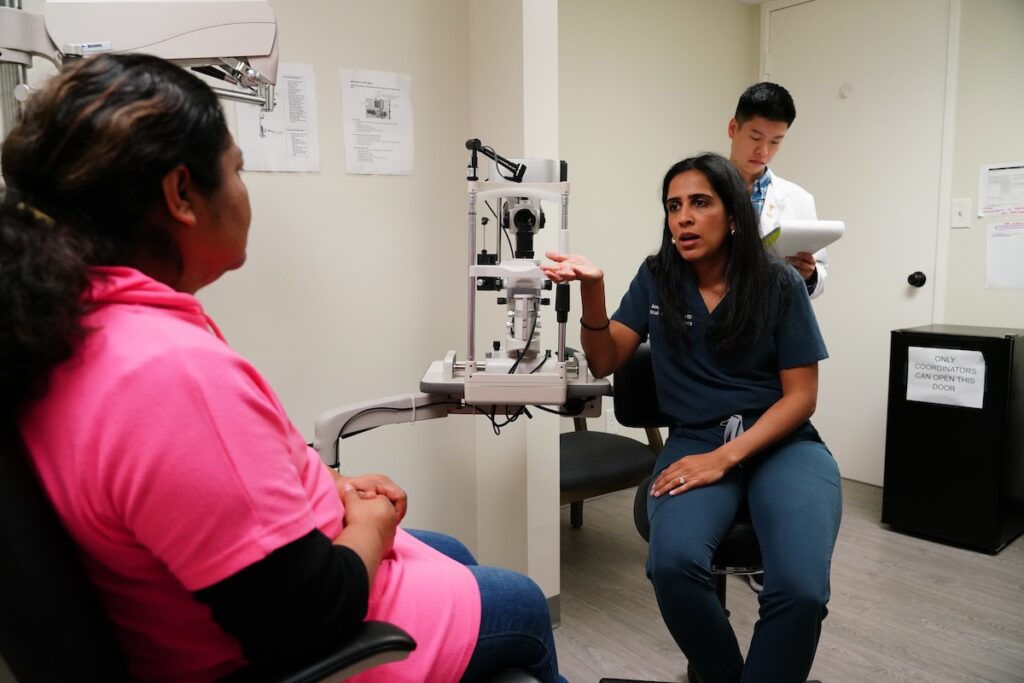
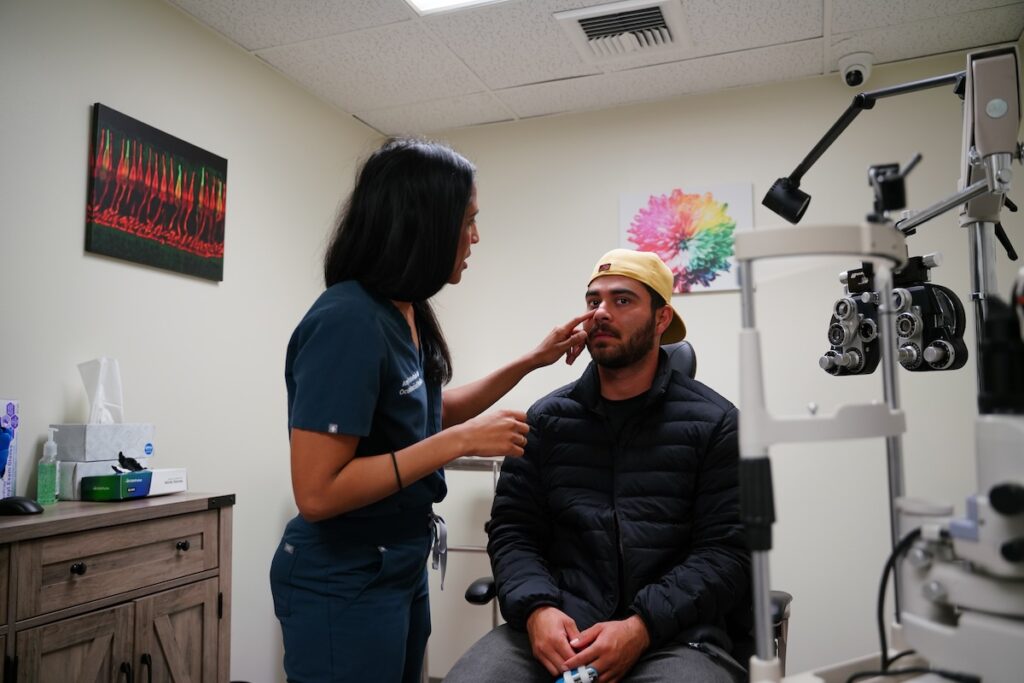
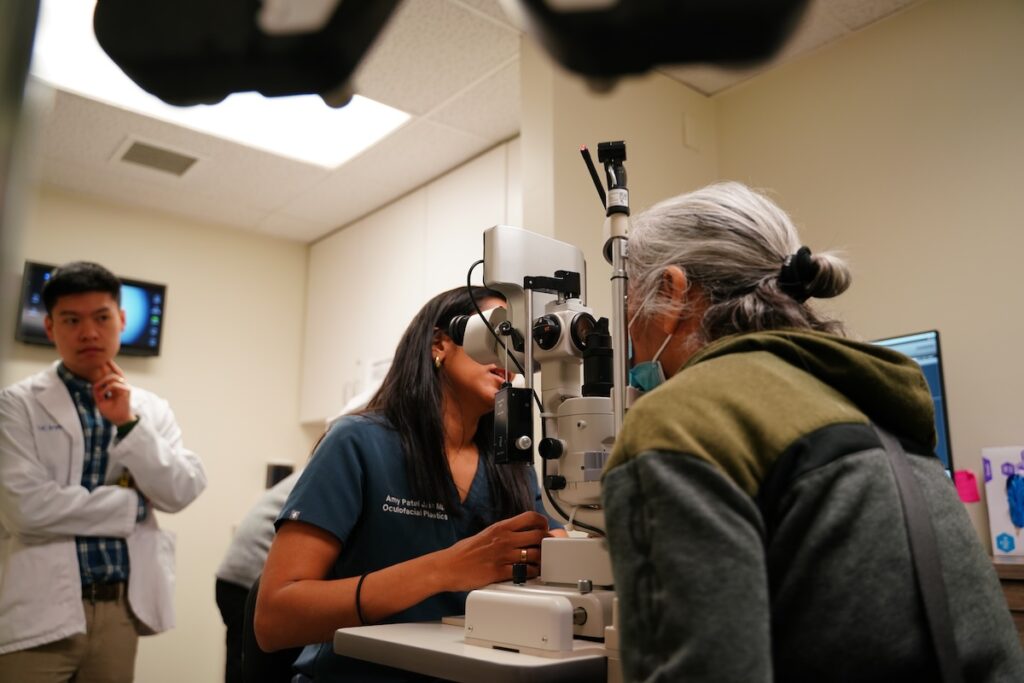
Common oculoplastic conditions include droopy eyelids (ptosis), eyelids turning inward or outward (entropion and ectropion), eyelid growths, tear duct problems, and eye problems related to thyroid disease. Oculoplastic surgeons also treat injuries to the eye and surrounding areas, as well as cosmetic concerns like excess skin and fat around the eyes.
Low Vision:
A low vision clinic is a specialized eye clinic that focuses on helping people with low vision (vision that cannot be corrected to 20/70 or better with glasses or contact lenses) make the most of their remaining vision. These clinics provide comprehensive evaluations, vision rehabilitation, and recommendations for assistive devices and strategies to improve daily life.
Initiated by Dr. Shora Ansari, OCEP Board Member, and led by Low Vision Specialists such as Dr. Rebecca Kammer, Dr. Rebecca Lin, Dr. Shawn Yu, Dr. Ashley Deemer and others, these clinics provide comprehensive evaluations, vision rehabilitation, and recommendations for assistive devices and strategies to improve daily life.
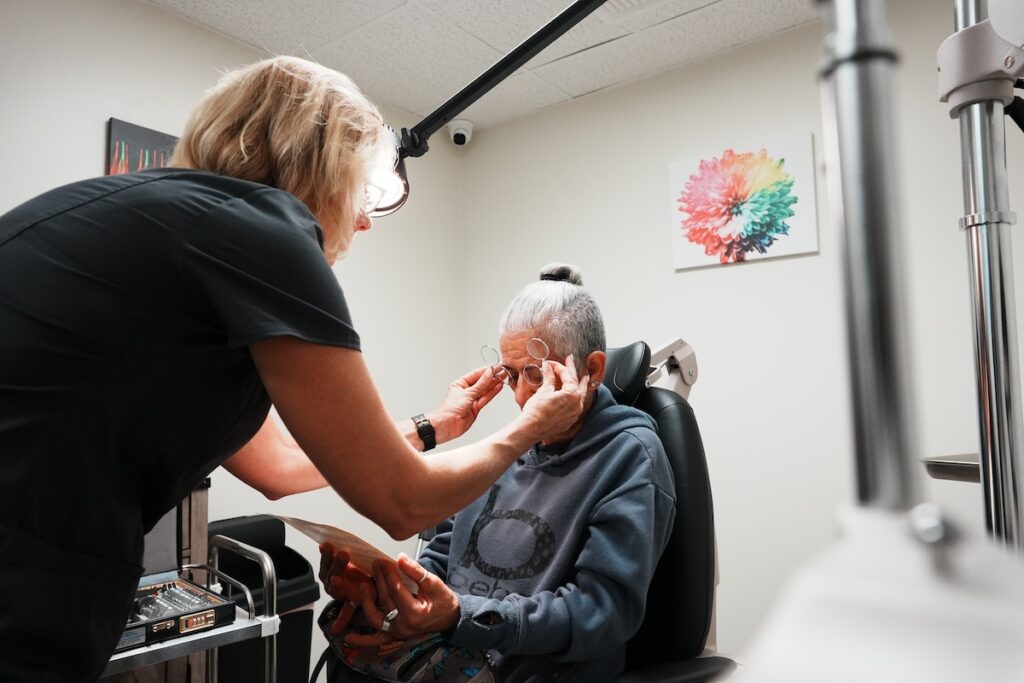
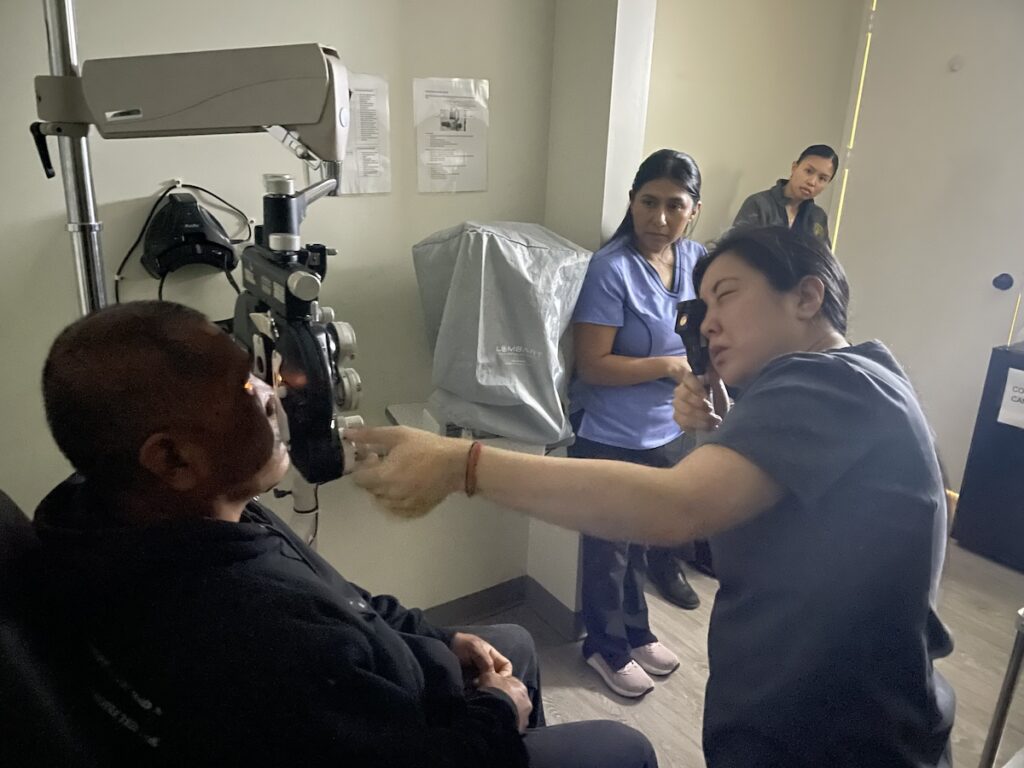
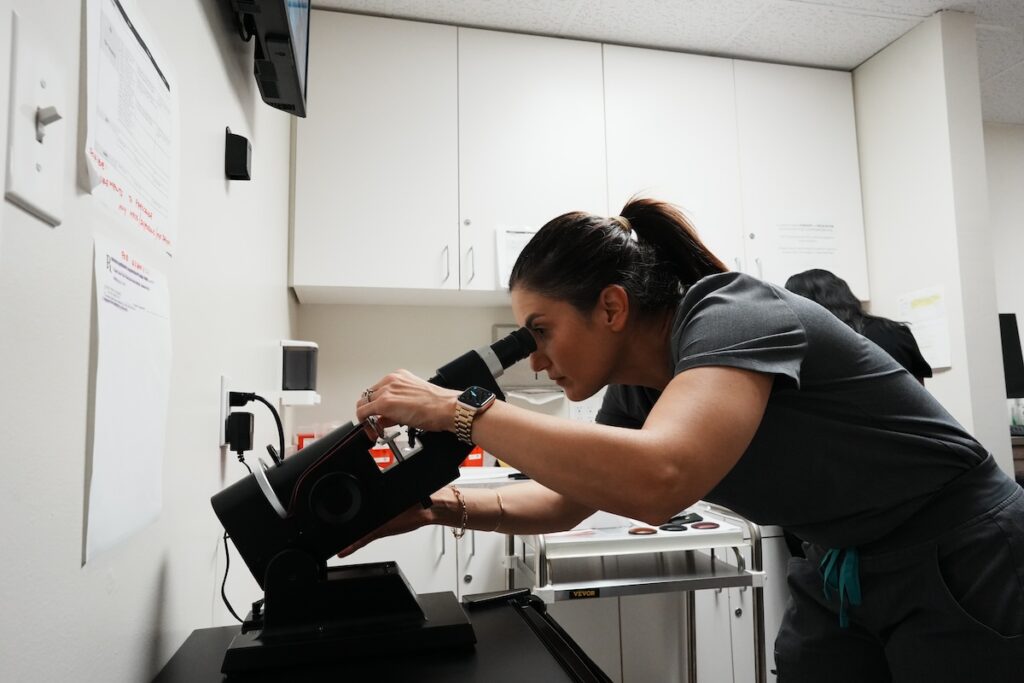
Pediatrics:
Pediatric eye care refers to the specialized care and treatment of eye conditions in infants and children. It encompasses diagnosis, prevention, and treatment of various eye diseases and vision problems specific to childhood, including conditions like lazy eye (amblyopia), strabismus (misaligned eyes), and refractive errors.
Key aspects of pediatric eye care include early detection and evaluation by specialized eye care providers. Pediatric eye exams assess vision, eye health, and binocular function using specialized equipment and techniques. Treatment may include vision therapy, eyeglasses, contact lenses, medication, or surgery. Treatment may involve exercises to improve visual skills and enhance how the brain controls the eyes, ultimately improving reading, learning, and attention. Conditions treated include a wide range of conditions, including amblyopia, strabismus, refractive errors (nearsightedness, farsightedness, astigmatism), cataracts, glaucoma, and more.
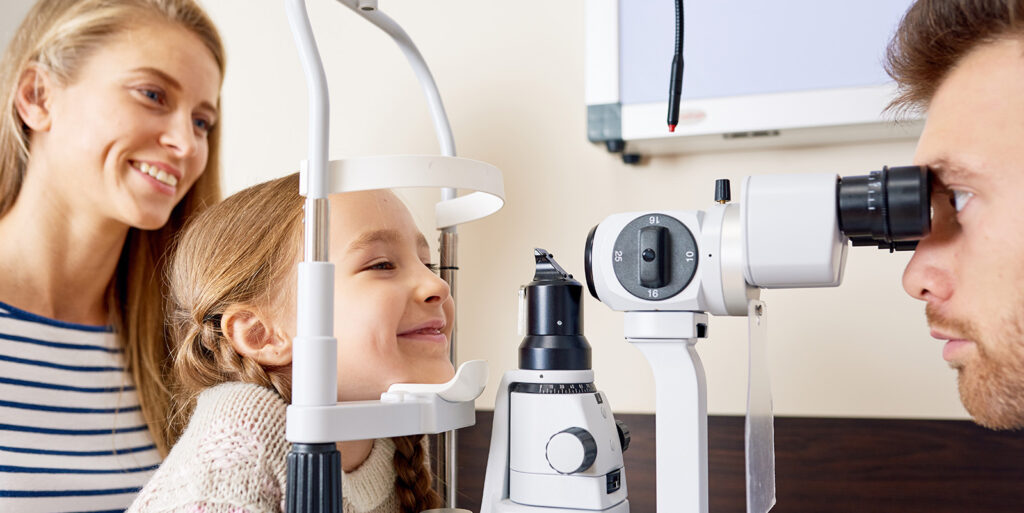
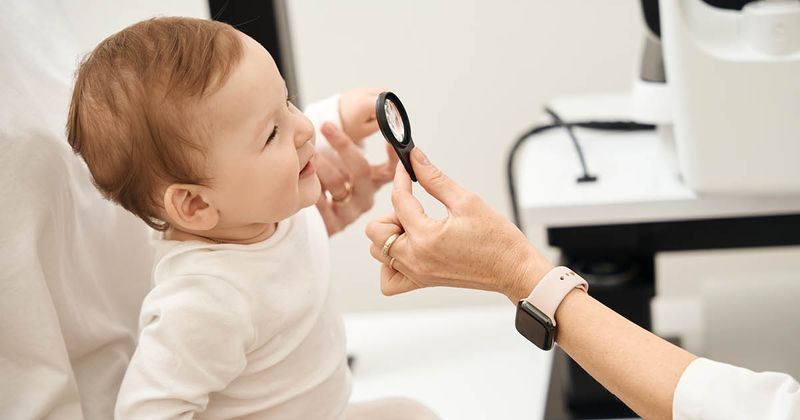
(c) AOA
Importance of Early Exams: Regular eye exams are recommended, starting at 6-12 months of age and continuing throughout childhood, as vision problems can go unnoticed and cause difficulties.
Parental Involvement: Parents play a crucial role in recognizing potential vision problems and ensuring their child receives proper care.
Strabismus:
Strabismus, also known as “crossed eyes,” is a condition where the eyes are misaligned, meaning they don’t look in the same direction at the same time. This misalignment can occur in different ways, such as one eye turning inward (esotropia), outward (exotropia), up (hypertropia), or down (hypotropia).
Common symptoms include crossed eyes, double vision, uncoordinated eye movements, and potential loss of depth perception.
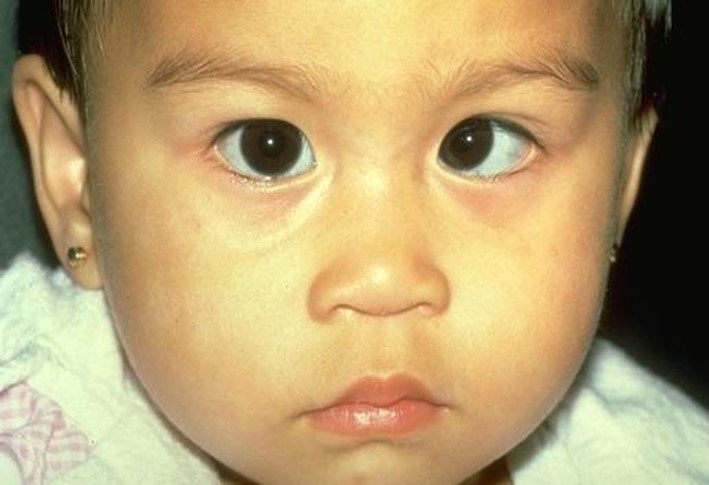

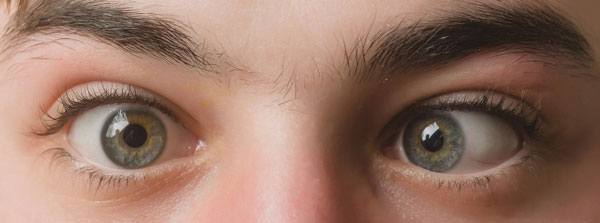
If left untreated, strabismus in children can lead to amblyopia (lazy eye), where the brain ignores signals from the weaker eye, resulting in reduced vision in that eye.
Treatment options for strabismus can include eyeglasses, vision correction therapy (eye exercises), and, in some cases, surgery.
Neuro-Ophthalmology:
Neuro-ophthalmology is a medical subspecialty that combines the fields of neurology (diseases of the nervous system) and ophthalmology (diseases of the eyes).
Neuro-ophthalmologists specialize in diagnosing and treating conditions that affect the nervous system and can impact vision, such as optic nerve disorders (e.g., optic neuritis, multiple sclerosis), eye movements (e.g., double vision, nystagmus),
pupillary disorders (e.g., unequal pupils), brain tumors, stroke, traumatic brain injury, etc.
Neuro-ophthalmologists use a combination of neurological and ophthalmological tests and procedures to evaluate patients and determine the underlying cause of their symptoms. Neuro-ophthalmologists may also collaborate with other healthcare professionals, such as neurosurgeons and neurologists, to provide comprehensive care.
